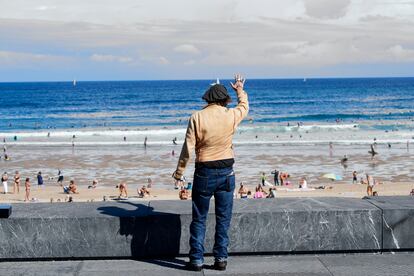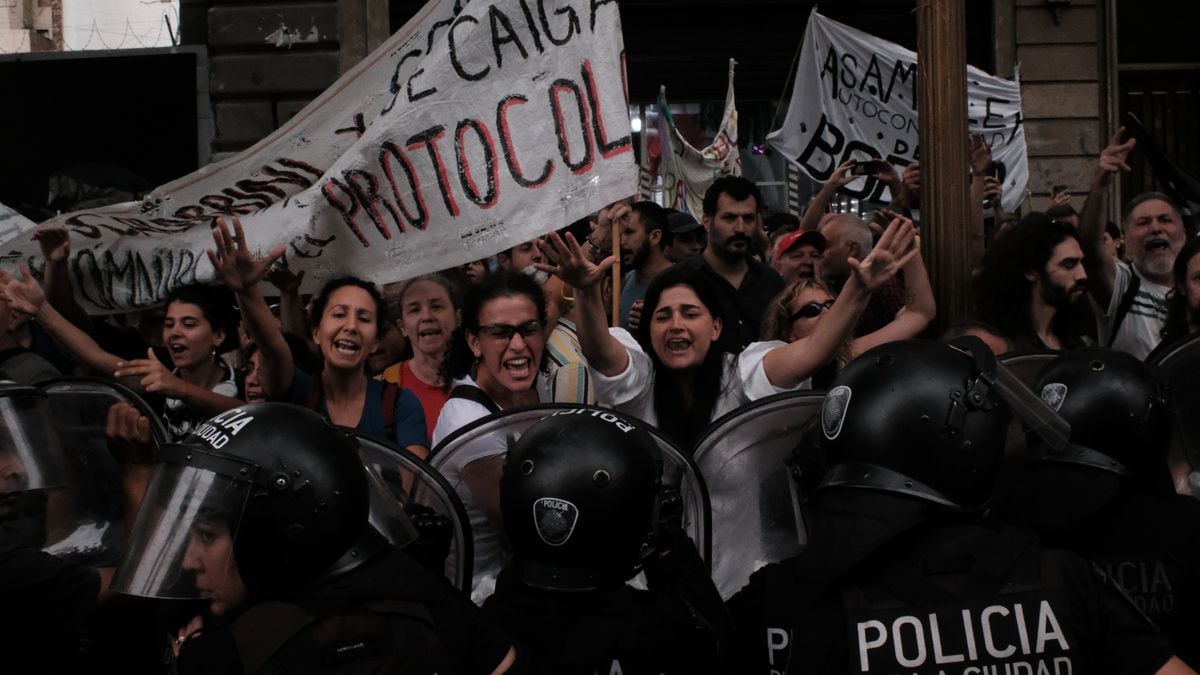The intrinsic relationship between the San Sebastián Festival - San Sebastián International Film Festival, Nazioarteko Zinemaldia, the
Festi
or the
Zinemaldi
such as sentimental appeals, or the SSIFF (San Sebastián International Film Festival) brand, with a cosmopolitan and market-oriented vocation ..., let everyone choose what they like the most - with the city that welcomes them every September has its origin in a brilliant idea: the of a group of Donostiarras merchants and hoteliers who, back in the early fifties, decided that the summer in La Perla del Cantábrico did not have to end on August 31 but on September 30. In other words, you had to earn a month from the cash register. The summers of San Sebastián were already petado by itself: Madrid tourists with possible crowds crowded the María Cristina, Continental, and London and England hotels, the Kutz, Maiz and Royalty cafes, the Gudamendi pigeon team, the horse races of Lasarte,La Perla party room and restaurants. Franco spent the summer between the palace of Ayete and the yacht Azor ("from Ayete to the yacht and from the yacht to Ayete" was then a popular San Sebastian saying) and his egregious wife, Carmen Polo, alias La Collares, would gladly visit the jewelers on Avenida de Spain (today de la Libertad) taking expensive trinkets along the
Jeró
, says the legend.
But it was all little, you had to stretch the gum, and it was stretched.
Sure, there was a problem.
A film festival is made of films.
And movies tell things.
And according to what things could not be told in Spain in 1953. Quite a few things.
So Franco and his boys, who had first viewed the initiative with reluctance and then as a good image operation before the outside in times of autarky, gave the "yes", subsidies through, but ensured the purity of the contents, censorship through.
Everything in its place.
And the festival went through good and even golden times and bad and even disastrous times.
The International Association of Producers was granting and successively snatching the coveted category 'A' to an appointment that disturbingly alternated international stars and posh premieres with flowery guests and floral games of all kinds (dinners, flamenco saraos, night parties, bulls ...) to the detriment of cinema.
There was a time when the festival was little like a film festival and he was about to leave for Palma de Mallorca, but things did not happen and he stayed in Donosti.
A festival for the public
“The festival has a relationship with the city on two levels, one emotional and the other economic,” explains José Luis Rebordinos, director since 2011. “The citizen of Donostia considers that the festival is theirs and feels it as such. In the worst moments, the one who has kept him alive has been the city. Also, this is a festival for the public, unlike Cannes which is for professionals only. Two years ago there were 178,000 spectators in a city of 186,000 inhabitants, and if there were more theaters, we would add more people. And then there is the economic part. Last year, in the middle of the pandemic and with a capacity of 40%, many hoteliers told us that the festival had saved the summer season for them… ”.
The American actor Kirk Douglas, in the kitchen of a gastronomic society in San Sebastián during the 1958 edition, in which he presented 'Los Vikingos'.
The visit in 1958 of a certain Kirk Douglas to promote the film
The Vikings
was the definitive accolade.
Especially when that same year monsters such as King Vidor and Anthony Mann stepped onto the streets of the Old Town, the Tarzan Lex Barker brought the longed-for glamor and Alfred Hitchcock presented
Vertigo
in San Sebastián after postponing the filming of his next film,
Con la muerte. on the heels
. Hitch was enthralled with the city in general and with the San Telmo convent in particular (the photos of the filmmaker posing next to the nuns, with a city guard or inside a shop window are priceless), and the famous phrase, unfortunately never brought to fruition: "This city would be the perfect setting for a movie of mine." Yes, Woody Allen would do it many years later, who, after visiting the festival several times (and the successive three Michelin stars in the city), shot in Donosti what is still his last film,
Rifkin's Festival.
The sixties and the beginning of the seventies supposed the consolidation and above all that of an endless parade of world cinema stars. Audrey Hepburn, Deborah Kerr, Fritz Lang, Sam Peckinpah (who premiered
The Ballad of Cable Hogue
in San Sebastián
) and even a very young Francis Ford Coppola, who in 1969 won the Golden Shell with
The Rain People
.
In the old-fashioned bars you could see Sylva Koscina, Sophia Loren, Eva Marie Saint, Lola Flores and Curd Jürgens (who would end up dropping out of the festival to escape to the Sanfermines before the annoyance of the organizers). they enjoyed in El Chofre - the San Sebastian bullring that has now disappeared - immortalizing the Italian actor Alberto Sordi doing his bullfighting with a whole Antonio Ordóñez…, and in 1973 cyclone Elizabeth Taylor arrived.
Johnny Depp, during his visit to the Festival last year, where he presented the documentary 'Crock of Gold: A Few Rounds With Shane Macgowan', which he produced.
This year he will return to receive the Donostia Award.
Carlos Alvarez / Getty Images
The visit of the glittering Cleopatra changed the relationship between this city and its festival. The diva, who was the special guest of that year and also came to present the mediocre film
Night Watch
, stayed in the Royal Suite of the María Cristina hotel.
His suitcases had been lost at the airport and had to be found on the run.
According to all indications, the afternoon before going to the gala session at the Victoria Eugenia Theater, the actress gave a good account of the minibar and, in let's say "relative" conditions, demanded a car to travel the 50 meters that separated the door of the hotel of the theater.
She arrived more than an hour late and was greeted with boos and whistles by a crowd that was waiting for her almost in a trance on the red carpet.
But when she took the stage, dressed in a beautiful greenish sari, and asked for forgiveness, Saint Sebastian surrendered at her feet.
Things of mythomania.
Spielberg, that stranger
Two years later, the people of Donostia and the visitors experienced an absolutely rarefied festival. Only three days after the closing, with the triumph of José Luis Borau and his film
Furtivos
, and that an unknown - and ignored - Steven Spielberg premiered Tiburon in San Sebastián at the age of 28 (the journalist still remembers the impact of seeing it for the first time with 12 years in the Astoria theater), the Franco government gave the green light to the execution of five condemned to death in the face of international stupor and indignation. Thirteen countries had withdrawn their ambassadors from Spain. Franco's censorship was still active. Two months later, the dictator died in his bed at the Hospital de La Paz in Madrid.
The subsequent years were the most complicated in the history of the festival, and also in the relationship with its city. The Transition in Euskadi was tinged with ETA attacks and national protests in the streets, plus some incursions from the extreme right. The entry and exit of the gala sessions at the Victoria Eugenia turned night in and day out into pitched battles where tuxedos, evening gowns, checkered shirts, gray batons and rubber balls were mixed. . The supposed proletarians and proletarians who defended Euskadi charged against the supposed bourgeois and Spanishists who wanted to rob them, and the grays charged against everyone, while Escola and María Jesús, the florists who planted carnations on the lapels of the guests,They were flying ... The Film Festival was burning on all four sides.
1985: José Luis García Sánchez, director of 'La Corte del Faraón' and Antonio Banderas, one of the actors, surround Ana Belén, protagonist of the film, while a dantzari dances the 'aurresku' of honor at the end of the session Festival gala.ANTONIO ALONSO / EFE
But that did not prevent Donostiarras from attending the world premiere of
Star Wars
in 1977
,
with Harrison Ford, Carrie Fisher, R2-D2, C-3PO, Yoda and Chewbacca parading through the streets of Donosti. Or that the festival paid Luis Buñuel the tribute that he deserved so much and for so many years. Or that Bertolucci, one of the most faithful friends of this festival (he visited it about 10 times), would present his monumental
Novecento
. Or that the obligation of etiquette for gala sessions would be eliminated, a decision is much more transcendental in the sociological plane than it may seem in a city of extremes such as Donostia, capable of the finest and most brutal.
And then came the galactic beauty Sigourney Weaver with her
Alien
, and then came the Almodóvar girls, and Travolta walking so calmly through La Concha defending
Staying Alive
and Polanski photographing the photographers before presenting
Frenético
, and Robert Mitchum gorging himself on marc at Casa Cámara de Pasajes before collecting his Donostia Award, and the festival organizers going crazy so that Lana Turner and Mickey Rooney did not coincide in any restaurant or event. What had been one of the sensual myths of the golden Hollywood wanted to slap the comedian because he had written in his memoirs that they both had a secret child, which outraged the actress. I remember Mickey Rooney, by the way, in the María Cristina suite reaching a little higher than my navel and squeezing my hand as if it were concrete (his), and asking me in the interview: “Hey, tell me, in confidence, Mr. Journalist, you sure know, Lana ask for me?And one remembers the serenity of Kieslowski in the interview held on the balcony ("I just want to retire to a house in the woods and smoke and watch movies"). And the sympathy of Tarantino and Michael Douglas and Anjelica Huston, who, when asked what she liked the most about the festival, replied: “The cocochas and the Rekondo restaurant cellar”. And the kindness of Antonio Banderas and the pure border of his wife, Melanie Griffith, who did not stop getting her nails done during the interview. And the discretion of cinematic beasts like Robert De Niro and Al Pacino. And the eccentric clothing of one of the greatest ambassadors in the history of the contest, the American artist Julian Schnabel, then married to the San Sebastian model Olatz López Garmendia.And the boundless sympathy of an Emma Thompson who gave you a hilarious interview in the morning and winked at you from afar at night at a party at the Miramar palace after the premiere of Carrington (“Is she really winking at me? Emma Thompson? ”). And the bad host of Oliver Stone: hour and a half late in the interview. He had been late in front of several bottles of Rioja and the journalist left. Antimitomania stuff. And the unforgettable nights of the Anoeta Velodrome and its 5,000 spectators and its 400-square-meter screen (hour and a half late in the interview. He had been late in front of several bottles of Rioja and the journalist left. Antimitomania stuff. And the unforgettable nights of the Anoeta Velodrome and its 5,000 spectators and its 400-square-meter screen (hour and a half late in the interview. He had been late in front of several bottles of Rioja and the journalist left. Antimitomania stuff. And the unforgettable nights of the Anoeta Velodrome and its 5,000 spectators and its 400-square-meter screen (
Lawrence of Arabia, Salvador, Perdita Durango, Braveheart.
..).
Bette Davis, a goddess in Donosti
And in 1989 God came.
Goddess.
Bette Davis, devoured by cancer, smoking a mouthpiece, stuffed into a black dress and a black hat, posing cheekily at 81, talking about her legendary career, dismissing the makeup artist who had put the festival on her with outlandish boxes and demanding that one came from Paris to the despair of the director, Diego Galán.
In the end she was secluded in her suite 415 and was no longer seen.
A few days later he traveled to Paris in a medicalized plane.
He died two weeks after saying "goodbye, Donosti."
Although as the song of Los Secretos says: "But now all that happened." And years ago since the festival, which was the last resistant in a model of proximity where the people and the stars crossed each other (for example, in the Txepetxa bar eating anchovies, or in Aldanondo dining a steak or
chez
Juan Mari Arzak), is another.
Celebrities do not leave their suites and luxury restaurants.
They are surrounded by bodyguards.
They are not seen or seen with spyglasses.
They come shielded by tasty contracts.
These are other times, as Rebordinos acknowledges: “Despite everything, there is still some of that in San Sebastián.
Suddenly two guests decide to go for a walk around the Old Town.
But of course, they go safely.
Before they went as is, alone.
This society has become very aggressive, with social networks, mobile phones… So celebrities protect themselves a lot, and of course, it's a shame ”.
The world has changed, the cinema has changed, the festivals have changed.
This one too.
The movies are still there.
The stars are still there.
The autograph hunters are still there, the red carpet (since 1999 at the Kursaal) is still there.
It's all the same.
But nothing is the same.






/cloudfront-eu-central-1.images.arcpublishing.com/prisa/LYUXMEC3XFEO3DPJDTVI6NCWZE.jpg)


